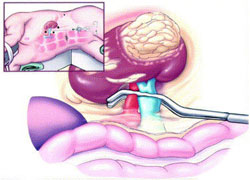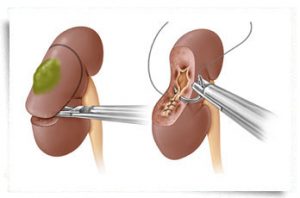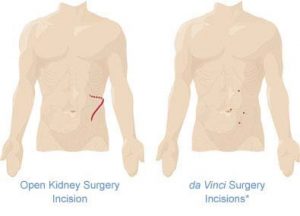Overview
- Bilateral RCC (Renal cell Carcinoma)
- RCC involving a solitary functioning kidney
- Chronic renal insufficiency
- Unilateral RCC with a functioning opposite kidney at risk for future impairment
- partial-nephrectomy

Several studies have confirmed that NSS provides curative treatment that is as equally effective as radical nephrectomy in patients who have a
- Single, small (< 4 cm in diameter)
- Unilateral localized RCC
- NSS is also becoming increasingly recognized as effective treatment for small, select, incidentally discovered tumors, even when the other kidney is normal
The major disadvantage of NSS is
- Small risk (1-6%) of local tumor recurrence due to undetected microscopic multifocal RCC in the remnant of the operated kidney
- Risk of bleeding
- Urine leak
Despite this higher complication rate, saving the normal nephrons in the kidney reduces the risk of impaired kidney function and its associated complications. Traditionally kidney tumors in the past were treated by complete removal of the kidney by open method. This involves a big cut and hospital stay of 7 days with severe pain and immobilization for a week.

This has been overcome by laparoscopic procedure were surgery is done by key hole method. Further to it now studies has shown that small kidney tumours can be removed by robotic method leaving behind the normal kidney. Robotic partial Nephrectomy (removal of kidney tumor alone) has both advantage of minimally invasive procedure and kidney preservation. It is the standard of care internationally. Robotic partial Nephrectomy is at present available at Apollo hospitals, Chennai. We have done multiple cases with good results in the last 6 months.

Advantages of Robotic Partial Nephrectomy over traditional open surgery.
- less blood loss
- less pain
- short hospital stay
- better tumor removal
- good chance of preserving the normal kidney
- less complications
- better clinical outcome and cancer control

